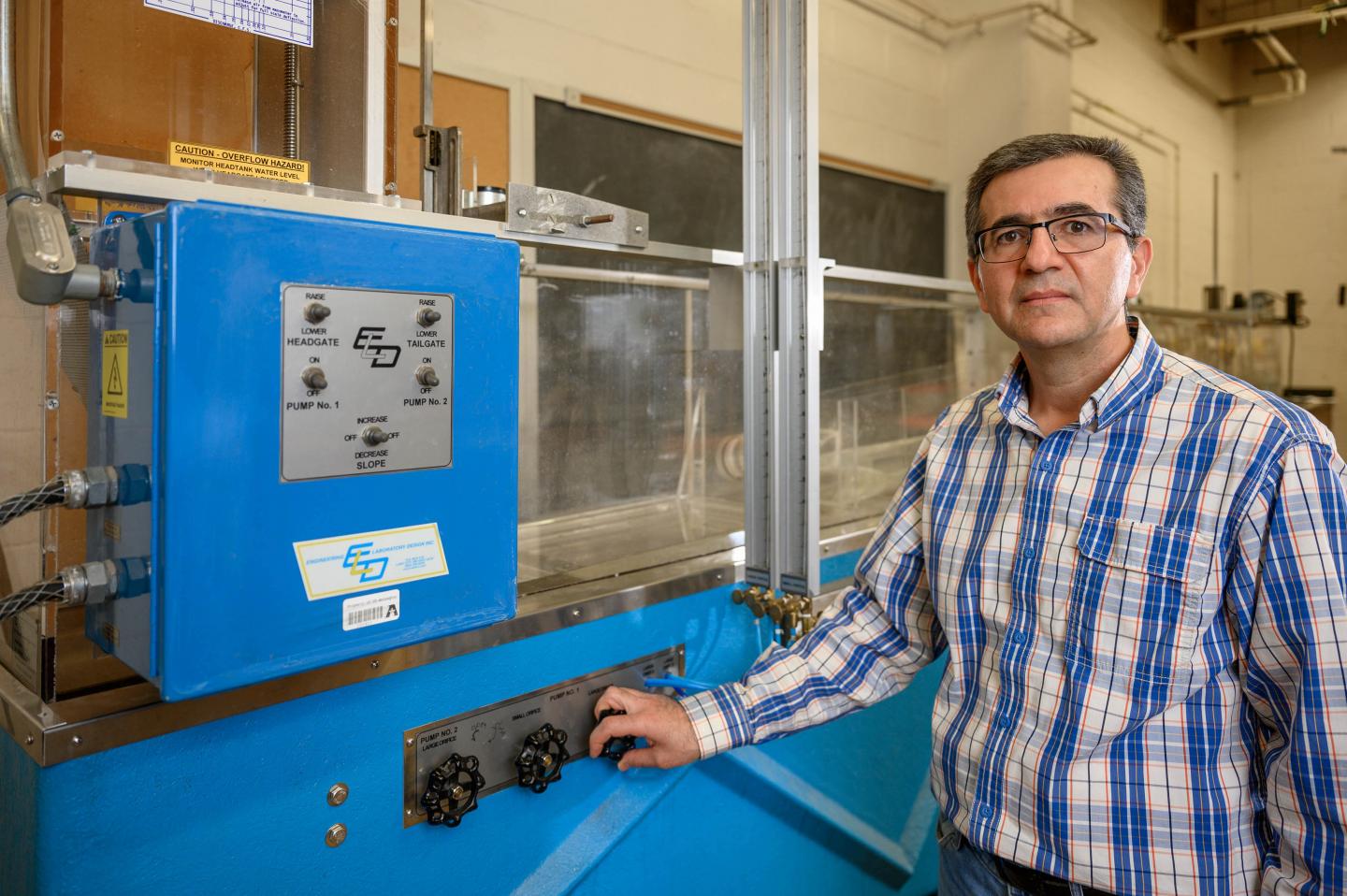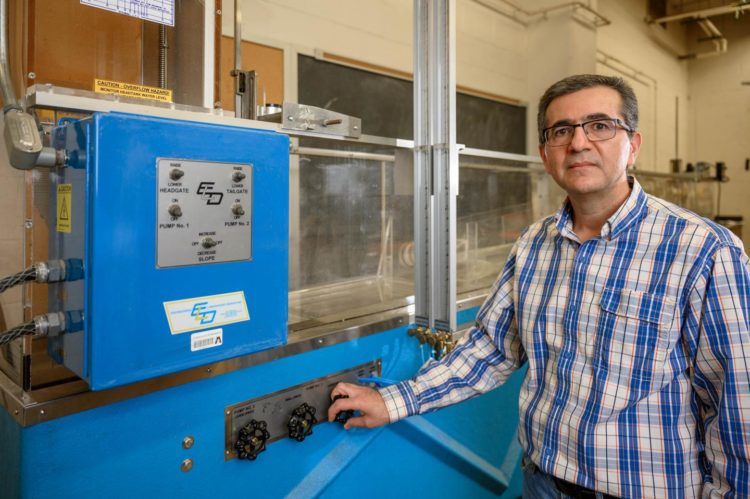Examining the safety and environmental impacts of bridges

Credit: UT Arlington
A University of Texas at Arlington researcher has received two Texas Department of Transportation (TxDOT) grants worth more than $500,000 to study both the impact of bridge construction projects on stream ecology and the safety of bridges during floods.
Habib Ahmari, civil engineering assistant professor of instruction, said his team will conduct a baseline study of stream morphology and aquatic habitat before a bridge is built, then what happens during bridge construction and after it is complete.
Ahmari and his team, which includes UTA civil engineering Associate Professor Xinbao Yu, plan to develop a predictive model for TxDOT that can be used to determine the downstream ecological impacts of bridge construction to support more effective project planning.
“Sediment release from bridge construction might change the sediment loading in receiving streams and cause habitat to suffer downstream of these bridges,” Ahmari said. “We have to determine the impact of bridge construction on freshwater mussels, which are natural filters of the water in rivers and streams. It’s a very important species to have in a river or stream because it shapes the ecosystem and clarifies water for other species.”
Ahmari will partner with Texas A&M AgriLife Research for two and a half years on the project, working with Charles Randklev, research scientist, and Fouad Jaber, associate professor, who are both co-principal investigators on the project.
His second grant will study the impact that flooding has on bridges. Ahmari’s team includes Professor Simon Chao and Assistant Professor Michelle Hummel, both of UTA’s Civil Engineering Department.
Texas has the largest U.S. bridge inventory, with 54,338 bridges used for public vehicular traffic, according to a 2018 TxDOT report. There are more than 580,000 bridges in the United States. Ahmari said flooding causes about 50% of all bridge failures.
The team will use laboratory testing and computer modeling to determine the force of floodwater on typical TxDOT bridges.
“Sometimes, designers will use what are called shear keys, which are structural elements attached to the bridge to prevent the bridge deck from collapsing during the flood,” Ahmari said. “We’ll determine which of these shear keys work best, or if an alternative is needed to help preserve bridge structure.”
Ali Abolmaali, chair of the Department of Civil Engineering, said Ahmari’s research could have applications beyond Texas.
“We hope to give TxDOT vital research information that will help them maintain their bridges,” Abolmaali said. “I could possibly see other states using data collected in this subject area to help with their bridges.”
###
Media Contact
Herb Booth
[email protected]
817-272-7075
Original Source
https:/





